|
BULB LOG 07
This week I am going back to basics again to explain my feeding regime for bulbs.
All plants are like people, they need food, and certain types of food serve different purposes. The basic formula seen on plant foods is detailed as NPK with N=nitrogen,P=phosphorus an K=(kalium)potassium.
Nitrogen feeds the growth of leaves, stems and roots.
Phosphorus helps early development, root growth and flowering.
Potassium develops flowers, seeds and the food supply for the bulb to store, plus it helps the plant's immune system to ward off disease.
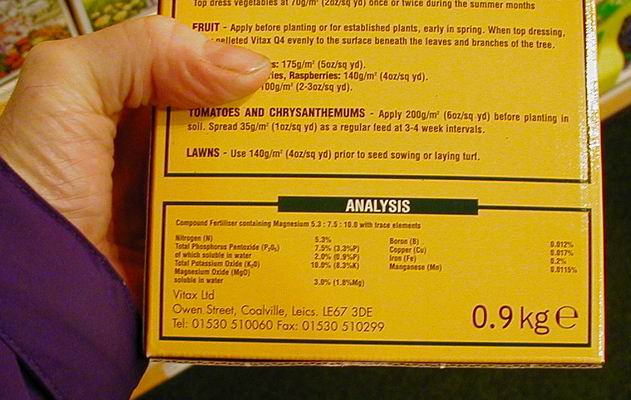
Vitax analysis
Every plant food should display the analysis as a formula N. P. K. and above you should be able to see 5.3, 7.5, 10 so this mix has 5.3% N, 7.5% P & 10%K plus it has added magnesium (helps the plant produce chlorophyll) and trace elements. It is this analysis that should guide you to which plant food you will use.
My methods of cultivating bulbs are all based on trying to understand the basics of what is happening during the different phases of the growth cycle.

Roots
When the plant breaks dormancy it starts to grow roots and the bud starts to extend slowly throughout the winter, so it requires a slow supply of nutrients in the form of nitrogen and phosphorus to fuel this process.
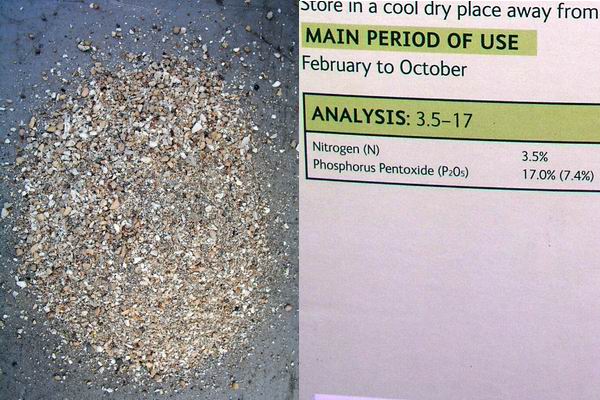
Bone meal
When I mix my compost (see log 1, 2005) I add bone meal which is an organic plant food that has been around and used by gardeners for centuries. It is produced by grinding down animal bones and provides a slow acting fertiliser containing nitrogen and phosphorus exactly what the bulb needs in the early period of growth. Bone meal also has the advantage of releasing the nitrogen slowly over a long period, exactly what we want at this stage of growth. Too much nitrogen too quickly will result in a flush of large soft leafy growth which is very susceptible to disease and fungal attack.
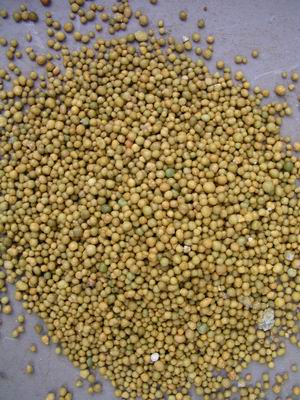
Slow release pellets
I used to use one of the pellet forms of slow release fertiliser. In these the nutrients are encased in a resin coating which allows the food to leach through at a rate depending on the temperature, the higher the temperature the faster the release of the food - most of these are designed to release the maximum food levels of NPK at around 21 degrees C. For a number of years I swore by this type of plant food for my bulbs, I simply added it to my compost mix and it provided the food for the bulbs for the rest of their growth cycle. But, we then started to get sunny mild periods in early February when the temperature in our small glasshouses shot up to around 20C during the day and of course the pellets did their job and released maximum levels of nitrogen which resulted in the bulbs putting on lots of lush green leafy growth. Well the mild period did not last and we were plunged back into a cycle of cold damp periods mixed with periods of hard frosts which caused all sorts of health problems for the bulbs. I
decided I needed to get control; I had to decide when the plants got fed and what food was best for them at that time and so I went back to the good old bone meal.
This first period of slow root and shoot growth can last several months until spring when the temperature rises and the bulb switches up a gear into a period of rapid growth.
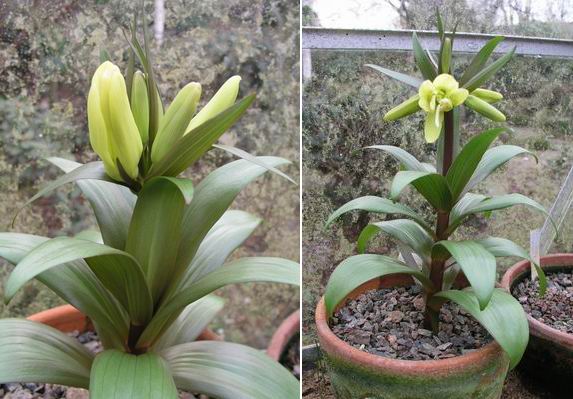
Frit chitralensis x2
The stem and leaves develop very rapidly and the roots extend further to supply the water and food that enable the plant to build all those cells. Above you can see the growth that Fritillaria chitralensis has put on in just a few weeks since it first appeared through the gravel.
It is during this rapid growth phase that you have to give them plenty of water to enable them to take up the nutrients which are still being provided by the bone meal.
A typical analysis of bone meal is N 3.5%. P 17% that is enough nitrogen for the bulbs to give a good hard leaf growth and plenty phosphorous to build a healthy root system and flower growth. There is only a small amount of instantly available, soluble, nitrogen in bone meal, most is released slowly with the aid of microrganisms breaking it down, this fits in perfectly with the requirements of the bulb.
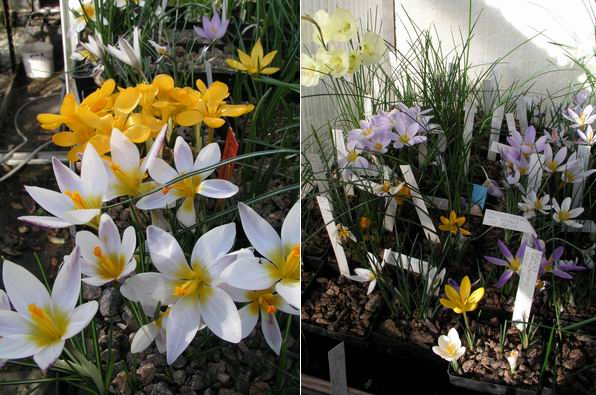
Crocus flowers
Once the bulb has reached the flowering stage it goes into a different phase of growth, it does not need so much nitrogen and water because it has already built all the cells of the stems and leaves but it now shifts to seed production and storing food (in the bulb) for the dormant period to come and for this it needs potassium.
Potassium (K) develops fruit (seeds) and next years flowers as well as providing a source of starch to store away in the bulb to carry the plant through dormancy and give it a head start. Potassium also acts as a tonic boosting the plant's immune system which helps it resist fungal attack.
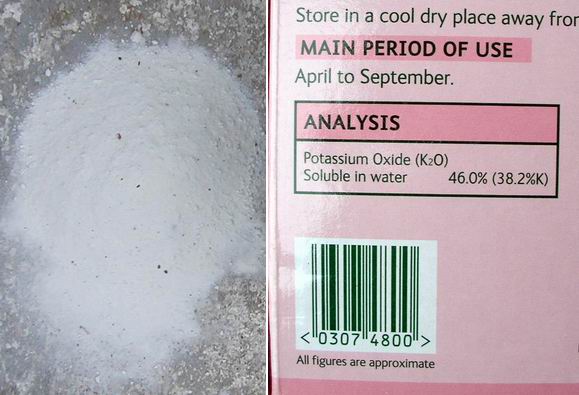
Sulphate of potash
I start adding potassium in the form of sulphate of potash to the bulbs when the flowers are just going over in mature bulbs. With seedling and non flowering bulbs I add it when I think the leaves have reached a normal size, this is always much earlier than with the flowering bulbs.
Potassium is usually called 'potash'; this name is derived from the old method of extracting by leaching it from wood ash and evaporating it in clay pots hence pot-ash.
Nowadays, potash is chemically produced and comes in the form of a soluble white powder which I add to the top dressing of the pots and every time I water a little is dissolved and taken down to the bulb roots. I add it at the rate of a teaspoon full to an 8cm pot, two to a 13 cm pot etc.
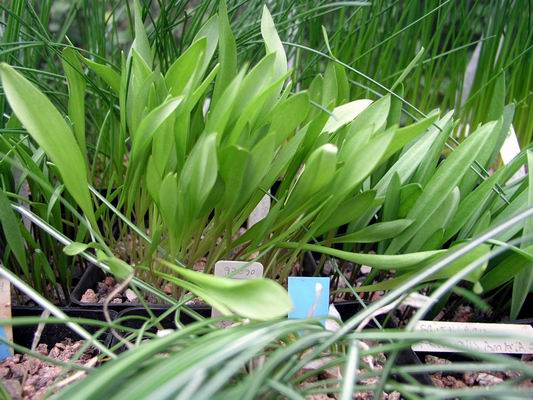
Fritillaria seed leaves
When I have added it very early in the season on seedling bulbs or autumn flowering bulbs I often add a second dose in the spring.
Since I have been growing more bulbs in plastic pots, which require less watering than the same bulbs in clay pots, I have to remember to get the potash on quickly because there is less opportunity to water and so to feed the bulbs, although, as long as there is moisture in the pot, some of the potash will leach down to the roots.
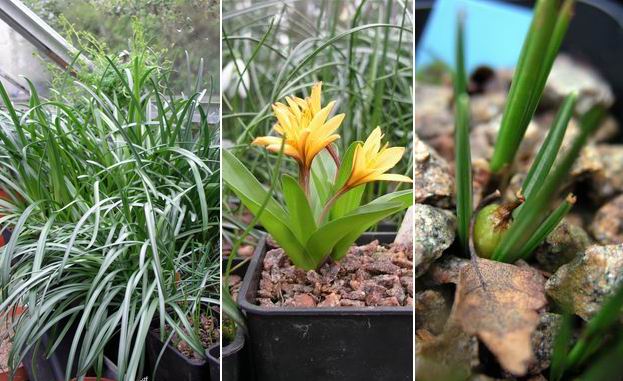
Sternbergia, colchicum & crocus seed pod
Autumn and early flowering bulbs need potash now as you can see that many of the spring flowers are fading while some of the autumn bulbs are already showing good seed pods swelling.
There are many other forms of potash available such as liquid tomato feeds but check out the analysis as most of these also contain significant amounts of nitrogen.
Although liquid tomato food is not my preferred source of potash I do sometimes add it, late in the season (May), to further supplement the bulbs' store when the plant is not only storing food in the bulb but it is also forming the shoot, leaves and flowers in miniature for next year, so no food means no flowers.
Plants also require micronutrients and microrganisms to keep them healthy and help them take up the essential N P K food. Micronutrients mainly in the form of the trace elements; boron, copper, iron, magnesium, manganese, molybdenum and zinc being the main ones are usually available in sufficient quantities in a good compost mix as they are present in loam and compost made from rotted vegetable matter including leaf mould. Also the newly crushed rock from the quarry that I mix into my compost brings with it many of these elements.
As microrganisms are present in the loam, compost and leaf mould that we use to make our potting mixture I do not like to sterilise the mix as this would kill off many of these beneficial organisms.
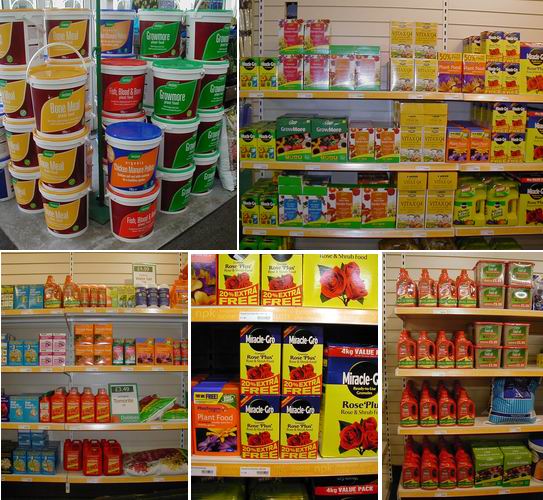
Plenty of choice
There is plenty of choice of plant foods available with dozens of brands to choose from but remember it is the NPK analysis that you want to select for your purpose. With bulbs, low nitrogen and high potash is best in a complete mix but my preference is for bone meal to provide the N & P early in the growth cycle then add in the potash (K) as it is required.
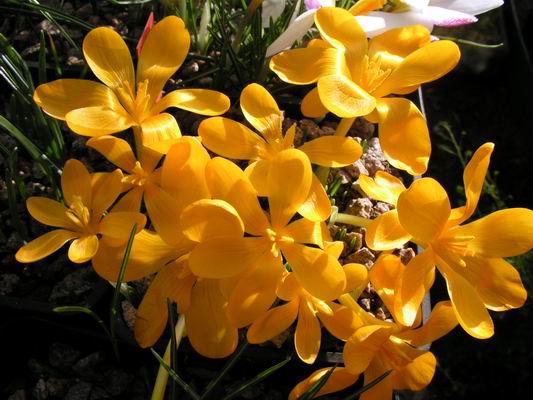
Crocus gargaricus
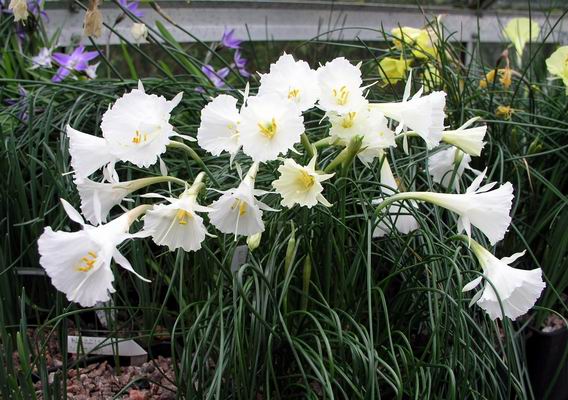
Narcissus cantabricus
I will leave you (above) with some proof that my regime does work.
^ back to the top ^
|

